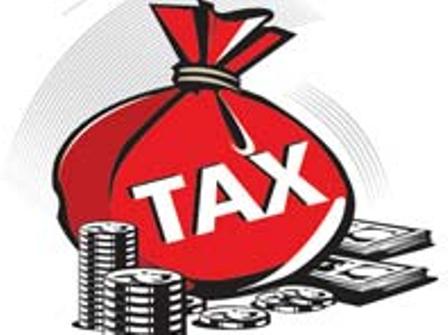The major sales tax provisions relevant for leasing are as follows: The lessor is not entitled for the concessional rate of central sales tax because the asset purchased for leasing is meant neither for resale nor for use in manufacture. (It may be noted that if a firm buys an asset for resale or for use in manufacture it is entitled for the confessional rate of sales tax). The 46th Amendment Act has brought lease transitions under the purview of ‘sale’ and has empowered the central and state government to levy sales tax on lease transactions. While the Central Sales Tax Act has yet to be amended in this respect, several state governments have amended their sales tax laws to impose sales tax on lease transactions. a. Levy of Sales Tax: Sales Tax is leviable when goods are sold. Thus there must be ” Goods and there must be a Continue reading
Business Taxation
Tax Collection Methods
There are three important types of tax collection methods: cadastral, at the source (before the receipt of the income) and through self-assessment (at the declaration of the income). The cadastre method implies the use of the cadastre. The cadastre is a register of all the typical objects (land, real estate) classified according to physical features and where the average profitability of the object is determined. Physical features include: for the land tax–the size of the land area, the distance from transportation ways and markets; for the house tax–the number of windows, pipes, doors, the type of the building; for industry tax–the number of employees and machines. The average profitability of the object, which is based on physical features, may differ significantly from actual profitability; this constitutes the main disadvantage of this method. Taxation at the source is calculated and deducted at the accounting unit of the company, which pays the Continue reading
Minimum Alternative Tax (MAT) and Computation of Book Profits
Provisions of MAT for payment of tax by certain companies (Section 115JB] Tax payable for any assessment year cannot he less than 15% of book profit: Where in the case of a company, the income-tax payable on the total income as computed under the Income-tax Act, is less than15% of its book profit, such book profit shall be deemed to be the total income of the assessee and the tax payable by the assessee on such total income (book profit) shall be the amount of the income-tax at the rate of 15%. Allowing tax credit in respect of tax paid on deemed income under MAT provisions against tax liability in subsequent years (Section 115JAA] Where any amount of tax is paid under section 115J B (1) of Income Tax Act by a company for any assessment year beginning on or after 1-4-2006, credit in respect of the taxes so paid Continue reading
Introduction to Income Tax
The word tax was derived from the Latin word ‘taxore’ meaning to estimate, appreciate or value. Tax is a price which each citizen pays to the state to cover his share of the cost of the general public services which he will consume. It indirectly provides employment opportunities. Taxes are compulsory contributions imposed by the government on its citizens to meet its general expenses incurred for the common good, without any corresponding benefit to the tax payer. In 1860, the British government firstly introduced tax in India. The present law of income tax is contained in the income tax Act,1961 as amended up to date; the income tax rules 1962 as amended up to date and finance Act passed by the parliament every year. Income Tax Act came into force with effect from 1-4-1962 and extends to the whole of India. Assessee [Sec 2(7)] Assessee means a person by whom Continue reading
Introduction to Value Added Tax (VAT)
Value Added Tax or VAT is a broad-based commodity tax that is levied at multiple stages of production. The concept is akin to excise duty paid by the manufacturer who, in turn, claims a credit on input taxes paid. Excise duty is on manufacture, while VAT is on sale and both work in the same manner, according to the white paper on VAT released by finance minister Chidambaram. The document was drawn up after all states, barring UP, were prepared to implement VAT from April. It is usually intended to be a tax on consumption, hence the provision of a mechanism enabling producers to offset the tax they have paid on their inputs against that charged on their sales of goods and services. Under VAT revenue is collected throughout the production process without distorting any production decisions. VAT will replace the present sales tax in India. Under the Continue reading
Classical Principles of Taxation
A number of principles that characterize taxation in general and the taxation system more specifically were set forth by Adam Smith. These are: The principle of justice, which promotes the universality of taxation and the evenness of tax distribution among citizens in correspondence with their revenues (“the subjects of the state must participate in the maintenance of the government in correspondence with the income that they make use of under the protection and with the help of the state”). This principle means that taxes must be deducted in conformity with the capacity of the payer, who is obligated to take part in financing a corresponding share of the state’s expenditures. In the international practice, there are two methods of implementing the justice and equality principle. The first method entails insuring the benefit of the taxpayer. According to this approach, taxes paid must correspond to the benefits received by the taxpayer Continue reading
